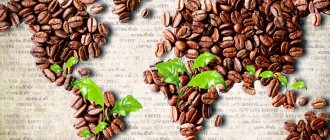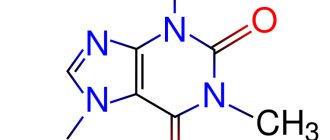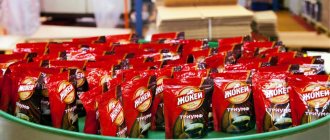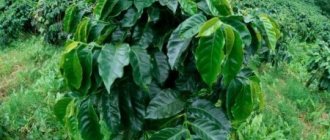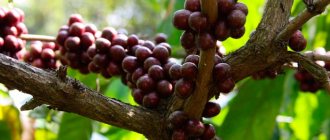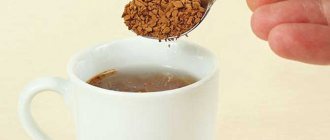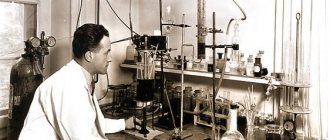The taste of coffee depends on the variety, quality, growing conditions and processing of coffee beans. Four types of coffee are grown commercially: Arabica, Robusta, Liberica and Excelsa. The most delicious and aromatic, and therefore the most expensive, is Arabica. True, recently new varieties have appeared from the so-called “Ethiopian heritage” - wild varieties of coffee. They are considered promising, but the best of them, for example, Geisha, come from Arabica.
The fruits of the coffee tree are called berries (in the English tradition - cherries). All types of coffee berries have the same structure and differ from each other only in size, thickness of the peel or parchment shell, and color.
The berry most often contains 2 grains. Ripe berries, depending on the type of coffee tree, turn red or yellow. As the pulp matures, it acquires an increasingly sweeter taste. The pulp contains caffeine (although it is much less than the beans), and it produces an invigorating drink - cascara.
Structure of a coffee berry:
- The outer shell of the berry is the peel.
- Under the skin there is pulp (pulp).
- A layer of gluten separates the pulp from the grain shells. While the berries are green, this layer is hard, but as they ripen, it softens and becomes very sticky.
- Under the gluten there is a dense parchment shell.
- The coffee bean is surrounded by a thin, silvery shell that peels off during roasting.
The grain ripens together with the pulp, feeds on the beneficial substances contained in it, and acquires sweetness. Therefore, grains only from ripened berries are valued. If the berries are not ripe or overripe, the grains are classified as defective.
Peaberry coffee
As a result of mutation, up to 5% of coffee berries contain not two, but only one grain, called peaberry (peaberry translated from English as “pea”). Sometimes it is mistakenly believed that it consists of two grains fused together. This is not true: when two grains grow together, they form a hollow ball that can easily be divided into two concave halves. Such grains are considered defective, the defect is called “elephant ears”.
The process of creating a peaberry is completely different. A normal ovary always contains two tiny grains. However, in mutated berries, the development of one grain stops, but the other increases significantly in size: after all, it receives all the nutrients that nature provided for the two seeds.
Coffee brewed from peaberry has a brighter taste and intense aroma. In Western Europe, the USA and Australia, cafes designed for gourmets are opening, where coffee is prepared exclusively from peaberry.
It has been noted that most peaberry is formed on plantations where mineral fertilizers are not used. For example, in Tanzania up to 10% of Arabica is peaberry. Taking advantage of the high value of unusual coffee, Tanzanian farmers hand-select Peaberry beans and sell them at a much higher price than regular Arabica.
In Latin America, peaberry is called caracol ("snail") or perla (pearl). Thanks to the use of modern technologies, 2-3 tons of coffee are harvested here from one hectare (while in Tanzania - 300 kg). Therefore, Latin American farmers often see no point in manually sorting the coffee to separate the peaberries.
Alkaloids
The group of alkaloids includes biologically active plant substances endowed with the ability to influence the functioning of organs and systems of animal organisms. These are potent nitrogen-containing complexes, many of which are classified as toxic compounds.
Caffeine
Caffeine is the main alkaloid in coffee beans. The amount of substance in the dry residue reaches 2.5% of the total mass. For a potent compound, the share is impressive, so natural coffee drinks are the leaders among caffeine-containing products.
Caffeine is classified as a psychostimulant, due to its ability to stimulate the central nervous system, accelerate the conduction of nerve impulses while simultaneously blocking relaxation receptors.
Main effects of caffeine:
- toning the human body and increasing performance;
- stimulation of muscle fibers;
- acceleration of metabolic processes, including the metabolism of fats and uric acid;
- increasing the speed of reactions at the brain level.
Coffee beans with caffeine stimulate the activity of the heart and blood vessels, cause an increase in heart rate, spasm blood vessels and provoke an increase in blood pressure.
The effects are temporary, but in the presence of diseases of the heart, blood vessels, and nervous system, the likelihood of negative consequences increases. It is not recommended to drink coffee in large doses, exceeding two cups of drink per day.
Abuse of coffee drinks can lead to addiction, manifested by increased irritability, aggression and other behavioral disorders.
Theobromine
Sometimes, after drinking a cup of coffee, instead of the expected invigorating effect, you feel drowsy. The question arises: what is contained in coffee besides caffeine, endowed with other properties.
The alkaloid theobromine is localized in the central part of the coffee bean and acts opposite to caffeine. The substance does not stimulate the nervous system, but has a calming effect. The ratio of alkaloids of different directions determines the final effect of drinking the drink: invigorating or sedative.
Theophylline
Theophylline stimulates respiratory function. Makes breathing easier and reduces the severity of episodes of shortness of breath. Helps increase heart rate and stimulates cardiac activity.
Trigonelline
The compound does not have such strong effects on the human body, but it is trigonelline that gives the drink its unique taste. During roasting, the substance breaks down into aromatic compounds that give the drink a characteristic, recognizable smell.
Chemical composition of coffee beans
Coffee beans contain more than 100 chemical compounds. Many of them decompose during roasting, forming substances that affect the taste and aroma of coffee.
Substances that affect the properties of coffee as a drink:
- caffeine is an alkaloid that acts as an energy drink. Robusta has more caffeine than Arabica;
- trigonelline is an alkaloid that, when heated, is destroyed to form nicotinic acid. Trigonelline breakdown products react to form substances that create a pleasant aroma of roasted grains;
- carbohydrates, in particular monosaccharides (glucose, fructose, lactose, sucrose), which give the drink a sweet taste. Arabica contains 8.2–8.3% sugars, and Robusta contains 3.3–4.1%. The brown color of roasted coffee beans is a consequence of caramelization of sugars during heat treatment;
- fats - when heated, decompose, forming acids. It is due to the presence of fats that roasted coffee acquires a rancid smell during long-term storage. It is believed that Indian Arabica coffee contains the least amount of fat;
- organic acids: citric, tartaric, malic, oxalic, caffeic. Fruit acids give the drink sourness: citrus or berry, sometimes with wine notes. If there is an unpleasant taste of vinegar in the drink, it means that the grains have been fermented for too long, which is why acetic acid has formed in them. This taste is considered a disadvantage. Acids decompose when heated, so there is practically no sourness felt in dark roasted coffee. If you want to tone down the sourness in light roast coffee, you need to prepare the drink in a pour over or brew it using the cold brew method;
- chlorogenic acid (refers to organic acids), which itself does not have a bitter taste. When roasted, it forms chlorogenic acid lactones, which in turn decompose into phenylindanes, which are very bitter substances. Therefore, coffee made from dark roasted beans is always more bitter;
- tannins are compounds that give the drink a bitter-tart taste.
The most popular varieties in the world
Australian
The most popular is Arabica Australia Skyberry. This variety appeared in the world relatively recently, but has already won the love of gourmets all over the world, because its qualities are in many ways reminiscent of the favorite, expensive drink of the British royal family - Jamaican Blue Mountain. Taste characteristics – soft taste with a tart note.
Asiatic
- Arabica Yemen Mocha Mattari. For many centuries, the real wealth of Yemen was considered to be spices, incense and a special type of coffee - mattari mocha. The name of the product comes from the area where the plants are grown. It was this variety that first appeared on the territory of Russia and European monarchs drank it with pleasure, for which the drink began to be called “coffee of the lords.” Mocha has unique taste qualities - it can be easily recognized by its light sourness and pleasant chocolate aftertaste. This is one of the most popular single-origin coffees.
- Robusta India Cherry. This variety of Robusta has an incredibly rich aroma and a rather bitter taste with a slight sourness. It is not used as a single variety, but is often added to coffee blends.
Note: the following varieties are very popular - Arabica India Monsund Malabar, the most expensive coffee is recognized as Arabica Indonesia Kopi Luwak, another variation of the famous Blue Mountain - Arabica Papua New Guinea RV.
Arabica South America
- Brazil Santos (Arabica Brazil Santos). The drink has a rich, rather strong taste with a slight sourness and a hint of spice. If you don’t like exotic coffee, but prefer classic coffee, choose this variety.
- Colombia Supremo. The name means magnificent. The drink fully justifies its title - delicate, velvety taste, slightly sweet with a slight wine sourness.
Central America
- Arabica Guatemala Maragogype. It has a spicy taste and a slightly smoky aroma. The drink is valued for its richness and rich flavor bouquet with floral and fruity notes.
- Arabica Guatemala Antigua. It is distinguished by characteristic bitterness and notes of prunes, the aftertaste is light, citrusy with spicy chocolate notes. This variety is chosen by gourmets from different continents.
African
The most popular Arabica varieties are:
- Burundi AA (Arabica Burundi AA);
- Kenya (Arabica Kenya);
- Ethiopia Sidamo (Arabica Ethiopia Sidamo).
Considering that coffee is grown on many continents, we can say with confidence that there are as many varieties of this magnificent drink as there are tastes.
We recommend reading about the cultivation and varieties of Indian coffee, as well as in more detail about the differences between Arabica and Robusta.
photo: depositphotos.com/mazzzur, valentinar, anna421, seksan44
Dependence of coffee taste on climatic conditions
The taste of coffee of the same variety varies depending on the altitude at which the plantation is located:
- 600–1200 m – sometimes there are hints of earth and grass in the taste, especially if the grains are dry processed. When processed wet, the taste becomes more pleasant;
- 1200–1800 m – coffee has a nutty, citrus or vanilla-chocolate flavor;
- above 1800 m – floral, berry, fruity shades appear in the taste, sometimes with wine sourness.
High mountain coffee is considered the best. However, harvesting is not easy: the plantations are located in places with difficult terrain, on mountain slopes, where it is impossible to deliver equipment. Therefore, such coffee is collected by hand and processed especially carefully, otherwise it cannot be sold at a high price.
Usage
Coffee fruits are widely available in health stores and pharmacies. They can be found in several forms, including liquid extracts, tablets, and capsules.
The fruit is also often added to supplements designed to improve brain health and energy levels, usually along with a mixture of other fruit extracts.
Research suggests that doses of 100–800 mg per day may be safe and well tolerated. However, there are currently no official recommended dosages for these supplements (,).
It's also worth mentioning that coffee fruit is sometimes found in drinks such as juice blends, and is also used to make coffee cherry tea (also known as cascara), a type of herbal tea brewed from the dried rinds of the coffee fruit.
They are also added to some skin care products and applied topically to reduce inflammation and improve skin texture. However, more research is needed to evaluate how coffee fruit may affect skin health.
If you have any health problems or are taking medications, be sure to talk to your doctor before taking coffee fruit.
Coffee bean sizes
To sort grains, they are sifted through special sieves with cells of different sizes.
Types of coffee by bean size (green, unroasted beans are measured):
- very fine grain (sieve No. 12, mesh side length - 4.764 mm);
- fine grain (No. 13, 5.161 mm);
- small grain (No. 14, 5.558 mm);
- medium grain (No. 15, 5.955 mm);
- good grain (No. 16, 6.352 mm);
- sufficiently large grain (sieve No. 17, 6.749 mm);
- large grain (No. 18, 7.146 mm);
- extra large grain (No. 19, 7.543 mm);
- very large grain (No. 20, more than 8 mm).
The size of the coffee bean does not directly affect the taste of the drink; not a single modern quality assessment system considers size as a criterion. Sorting is only necessary for proper roasting of coffee. The larger the grain, the more difficult it is to roast it evenly inside and out.
Sample preparation
Frying The sample should be roasted 24 hours before cupping and should rest for at least 8 hours. Frying should be light or light-medium. Frying must be completed in a minimum of 8 minutes and a maximum of 12 minutes. Samples should be air cooled immediately (not water cooled). Once they reach room temperature (about 75ºF or 20°C), they should be stored in a tightly sealed container or airtight bag until cupping begins, to minimize exposure to air and to prevent contamination. Specimens should be stored in a cool, dark place, but not refrigerated or frozen.
Measurements The optimal ratio is 8.25 grams of coffee per 150 ml of water, as this corresponds to the midpoint of the optimal balance for the Golden Cup. Determine the volume of water with cupping glasses and adjust the weight of the coffee in this regard within +/- 0.25 grams.
Cupping preparation Samples should be ground immediately before cupping, no more than 15 minutes before pouring water. If this is not possible, samples should be closed no more than 30 minutes after grinding. Samples must be weighed as grains for a given ratio per appropriate volume of liquid. The crushed particle size should be slightly larger than typically used for a paper drip brew filter, and 70%-75% of the particles should pass through a US Standard 20 mesh (0.5mm). Each coffee sample is passed through a coffee grinder and then placed into cupping glasses. Lids should be placed on each cup immediately after grinding.
Filling The water used for cupping must be clean and odorless, but not distilled or softened. The ideal TDS is 125-175 ppm, but should not be less than 100 ppm and no more than 250 ppm. The water must be fresh. Its temperature is raised to 200ºF (93ºC) and poured over the ground coffee. Hot water is poured directly over the edge of the bowl so that the entire body is wetted. The bowls are then left undisturbed for 3-5 minutes before scoring.
Evaluation Sensory testing is done for three reasons: 1. To determine the actual sensory differences between samples 2. To describe the taste of samples 3. To determine product preference No single test can effectively solve it all, but they have some things in common
It is important that the evaluator knows the purpose of the testing and how the results will be used in the future. The purpose of this cupping protocol is to determine the cuppers' perception of product quality.
The quality attribute such as taste is analyzed and then, based on the previous experience of the cuppers, the samples are rated on a numerical scale. Scores between samples can be compared. Coffee that scores high should be noticeably better than coffee that scores low.
The cupping form provides the ability to record important coffee flavor attributes: aroma, bouquet, aftertaste, acidity, body, balance, uniformity, absence of contaminants and defects, sweetness, defects, and overall rating. Special taste attributes are positive assessments of the quality of the product, which are assessed by the cupper; Defects are negative ratings indicating unpleasant taste sensations; The overall rating is a personal assessment of individual marques, based on taste experience.
Etymology
The Oxford English Dictionary suggests that European languages generally seem to have received their names from Turkish kahveh
, around 1600, possibly through the Italian
Cafe
.
Arabic kahwah
kahveh
in Turkish , name of infusion or drink;
said Arab lexicographers originally meant "wine" or some type of wine, and was derived from the root verb kahiya
"to have no appetite". Another common theory is that the name comes from Kaffa Province, Ethiopia, where the species may have originated from.[12]
How to tell coffee fortunes for the future: step-by-step instructions
There are many variations of coffee fortune telling. In Italy, for example, a magic spell is cast while brewing coffee. And when the time comes to decipher, the fortuneteller whispers special words known only to a limited circle of people.
But such difficulties exist only in some countries, and usually there are no difficulties.
Preparing for fortune telling
The ritual will take no more than an hour, but all this time you must be in a collected state. Make sure no one disturbs you. Turn off your phone and other communication devices.
Prepare all the tools to perform coffee fortune-telling:
- A cup and saucer, preferably white or light in color - this makes it easier to see the pattern.
- Natural coffee to suit your taste – you should like it. It is advisable to take it in grains so that they feel your biofield and tune in to the desired frequency.
- Turk.
You cannot do fortune-telling on coffee grounds if you are worried about strong emotions: nervousness, excitement, excitement.
Your emotional background should be smooth. No splashes. After all, this can also affect the reliability of the ritual.
Preparing the drink
To tell fortunes using coffee grounds, you need to brew the coffee correctly, and not the way you usually prepare it.
After all, it is very important that there is a thick coating of coffee at the bottom of the cup to create drawings
- Only natural ground coffee will do. The best thing is to take it in grains and grind it yourself, asking the right question in your mind.
- 3 teaspoons per 200 ml of water is enough.
- Pour into a Turk and pour boiling water over it.
- Place on low heat and cook. At this time, you need to focus on the issue that worries you and think only about it.
- Cook until foam appears - everything is ready.
- Turn off and leave for a couple of minutes for the drink to infuse.
- Nothing foreign should be added to coffee - sugar, milk, cream, spices, etc.
- Pour the hot drink into the prepared coffee cup.
The preparatory process is over, now you can move on to the most important thing.
Is the result worth believing?
If you decide to learn to tell fortunes for yourself, and these are your first attempts, you should not count heavily on a 100% truthful result. After all, an inexperienced fortuneteller may make mistakes in interpretations, come up with some details on his own, or perform a ritual with errors.
In any case, even with a professional fortune teller, never base your life solely on the results of fortune telling. You are the architect of your own happiness. Its outcome depends only on you. And you are able to change what was destined, avoid misfortune or correct mistakes.
At first, be sure to write down your predictions and later check whether the promises come true. This way you will understand whether you are the one who can predict the future.
Story
Main article: History of coffee
According to legend, the coffee plant was discovered in Ethiopia by a goat farmer named Kaldi, who observed increased physical activity in his goats after they ate coffee beans.[6]
Significant dates
- The first coffee plant was found in the mountains of Yemen. It was then exported to the rest of the world through the port of Mocha, Yemen, by 1500.
- First cultivation in India (Chikmagalur) – 1600
- First grown in Europe (also first grown outside of East Africa/Arabia) - 1616
- First cultivation in Java - 1699
- First cultivation in the Caribbean (Cuba, Hispaniola (Haiti and Dominican Republic), Jamaica, Puerto Rico) – 1715–1730
- First cultivation in South America - 1730
- First cultivation in the Dutch East Indies - 1720
- Plants were first brought to America around 1723.
- Refried beans first sold in the retail market (Pittsburgh) - 1865
- Important spray drying techniques developed in the 1950s, which along with freeze drying are a method for creating instant coffee.
Distribution
The bean belt is yellow: the top 20 producers (2011) are marked in green.
Brazil produces about 45% of the world's coffee exports, most of which is grown in Brazil. The United States imports more coffee than any other country. As of 2015, Americans consumed approximately 400 million cups of coffee per day, making the United States the world's leading coffee consumer.[7]
Coffee plants grow within a certain area between the tropics of Cancer and Capricorn, called the bean belt or coffee belt.[8][9][10][11]
Homemade Sambuca Recipe
One of the legends says that a peasant mixed up the jugs and put anise, elderberry and a bunch of herbs in a jug with hop tincture instead of a container with a medicinal decoction.
Upset, he gave up on the spoiled product and remembered it a few months later. Having taken a sample, he realized that by chance he had received an excellent drink, which was confirmed by the guests, who were carried away by the tasting almost until the morning. There are no particular difficulties in preparing sambuca at home. You won't get the vintage look, but sometimes a homemade version can beat the sample. Required ingredients:
- fruits of star anise and common anise, 50 g each;
- alcohol or twice purified moonshine not lower than 70%;
- 30 g black elderberries;
- 300 g of fructose, sugar makes the drink cloudy;
- 0.6 l of water;
- zest of 1/4 lemon.
The process is divided into 3 parts: infusion, distillation, mixing. At the first stage, elderberries, anise seeds and lemon zest are placed in a container, filled with alcohol and put in a dark, warm place for 4–5 days. To dissolve the essential oils, the mixture is stirred every day.
After standing, it is diluted with one glass of water and poured into a distillation cube. The fruits of star anise and 1/3 of the mass used to prepare the tincture are also added there. The subtlety is very slow distillation, no faster than 3 drops per minute. One more nuance - you need to stop the process as soon as the volume of the resulting liquid reaches 0.7 liters. It will concentrate all the necessary flavors.
Then prepare a sweet solution by stirring fructose in boiling water and simmering over low heat for 2-3 minutes.
The resulting mixture needs to cool, after which it is bottled, securely sealed and sent to a cool place to “rest” for at least 30 days. The longer you leave the bottle untouched, the more refined the taste of sambuca will be.
We recommend reading:
